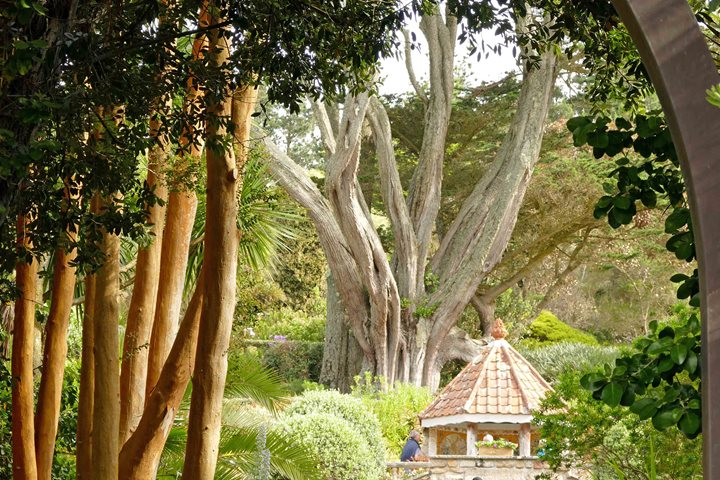Overnight we sailed from the tip of one of the two peninsulas of Wales that reach out into the western seaways, from Fishguard in Pembrokeshire to Holyhead in Anglesey. Both peninsulas have Norse place-name evidence that speak of the years of Viking hegemony in these relatively sheltered waters between Ireland and Britain, Anglesey meaning Ongle’s Isle in Norse. Both peninsulas are rich in archaeological sites and in early historic ones, as witnessed by the sites at St David’s in Pembrokeshire and St Cybi’s in Holyhead on Holy Island. Today these places seem remote from the main centres of population and are known principally as staging-posts for Ireland using their respective ferry ports, but in earlier times the use of sea transport rather than road transport meant that they were at the heart of commercial and cultural exchange routes.
From Holyhead a number of excursions were organized, the largest group opting to head south for a ride on the Ffestiniog narrow gauge railway that originally carried slates from the quarries of Blaenau Ffestiniog to the quayside at Porthmadog for export around the world. After a scenic ride we moved on to Castell Deudraeth for a fine lunch before touring the Italianate village created by architect Clough Williams-Ellis as a protest against the ugliness of functional modernism. He named his village Portmeirion and his daughter subsequently created collectable pottery using that generic brand name, including the Botanic Garden and Ponoma designs. Other groups visited an ancient site of copper mining at Mynydd Parys, or toured Caernarfon Castle, a massive edifice designed to intimidate the Welsh after the Edwardian conquest of 1282.
Returning to Holyhead, we enjoyed a splendid Captain’s Farewell Dinner before being entertained by a virtuoso performance from the contemporary Welsh folk group Calan.




